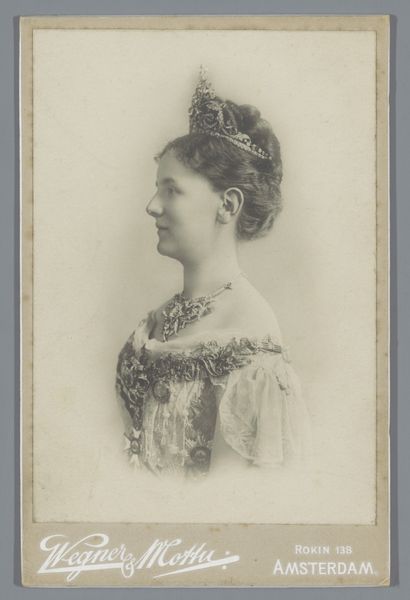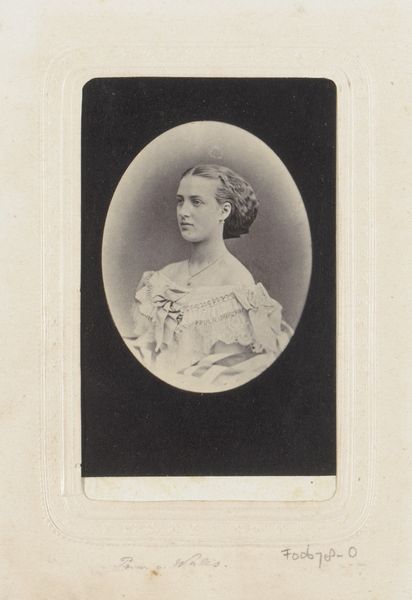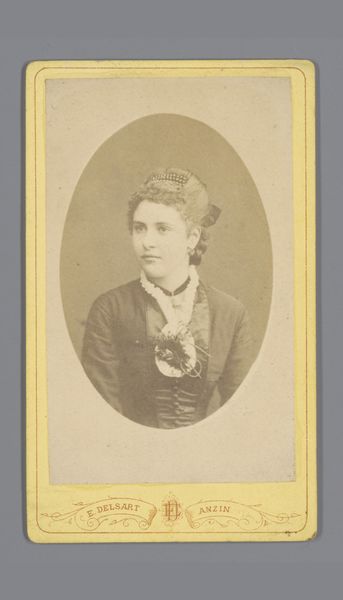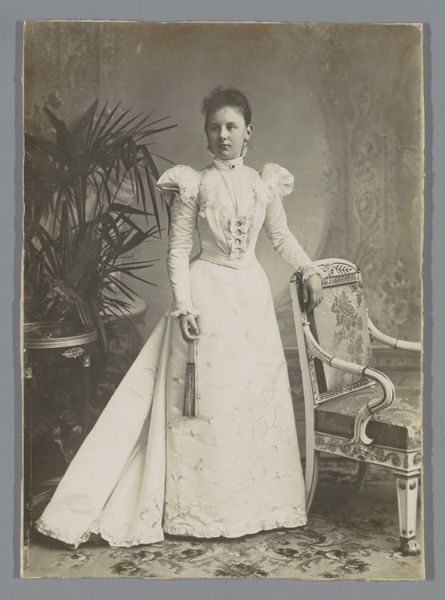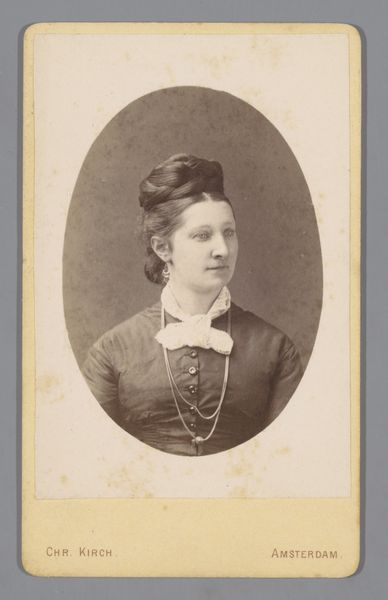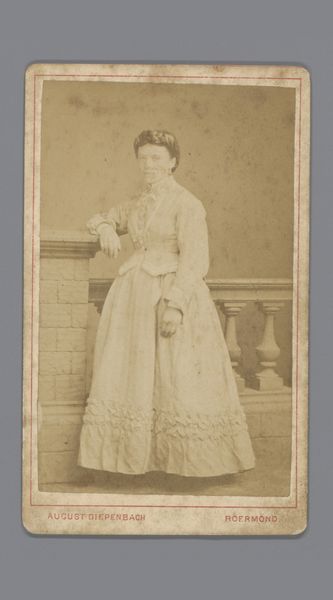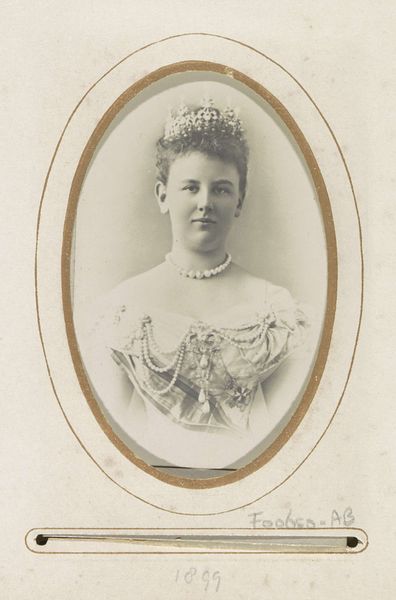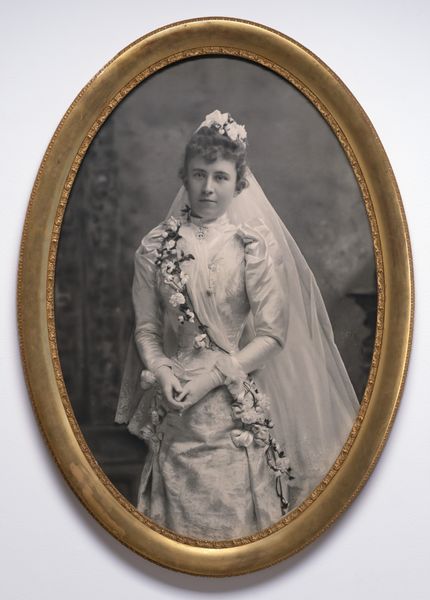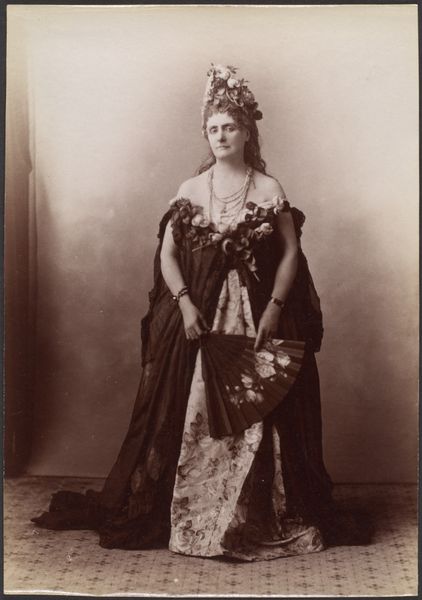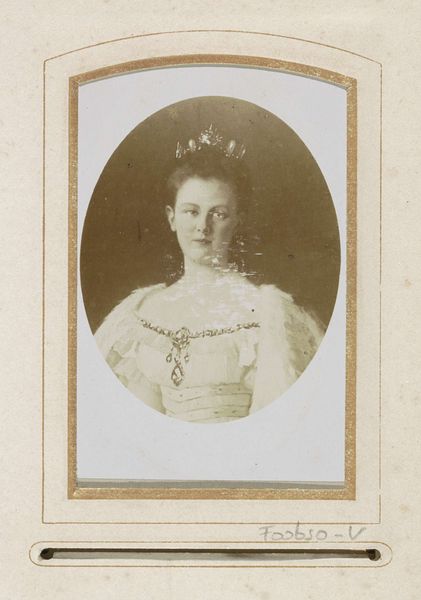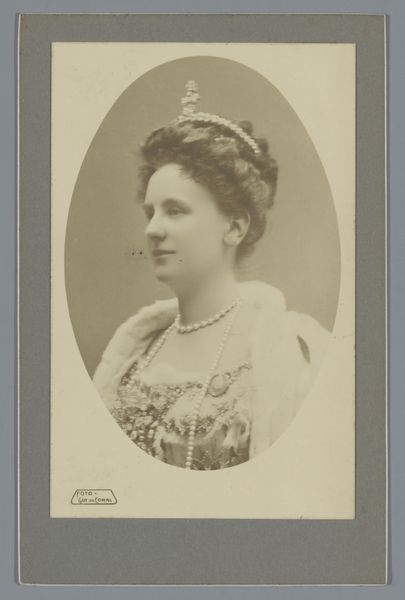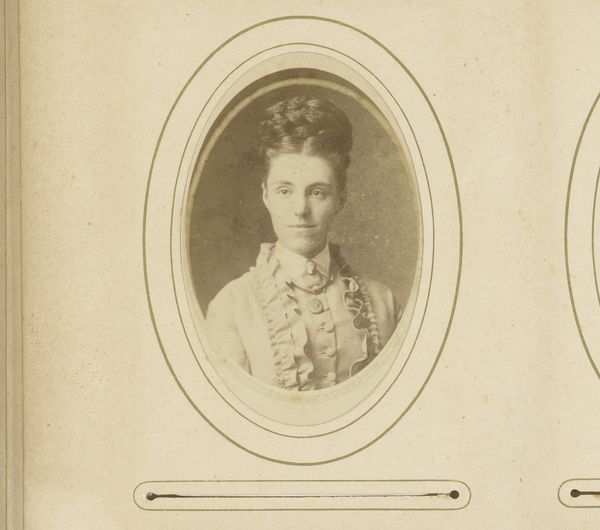
Dimensions: height 240 mm, width 184 mm
Copyright: Rijks Museum: Open Domain
Editor: This is Herman Deutmann's portrait of Queen Wilhelmina, made in 1912, using a gelatin-silver print. I’m immediately struck by the formality and the somewhat muted tones. What do you see in this piece? Curator: I see a meticulously constructed image, not just a representation of power but an active assertion of it during a time of significant social and political upheaval. This portrait, framed in its oval enclosure, speaks volumes about Wilhelmina's position and the weight of her inherited role at a pivotal point in history. Editor: Pivotal how? Curator: Well, think about it. It's the dawn of a new century, suffrage movements are gaining momentum, and the role of monarchy itself is being questioned across Europe. This image presents a deliberate counter-narrative – a queen, adorned in finery, photographed with intention. The fur, the pearls… how do they make you feel? Editor: There's definitely a sense of detachment, even coldness. She seems elevated, unapproachable. Curator: Exactly. And isn't that detachment itself a kind of statement? Power relies on distance. Consider too, the use of photography. What statement is being made about how this powerful individual wants to be perceived by a changing world? Editor: So, it's not just a portrait; it's a carefully constructed political message. I hadn't considered the social climate so explicitly. Curator: Precisely. Understanding the historical and societal forces at play allows us to unpack these layers of meaning. It’s through this lens that we can recognize not just who is represented, but the 'why' behind their representation. Editor: I'll never look at a formal portrait the same way again. Curator: And I’m happy if this piece urges viewers to think about the context in which art is consumed, understood and created.
Comments
No comments
Be the first to comment and join the conversation on the ultimate creative platform.

